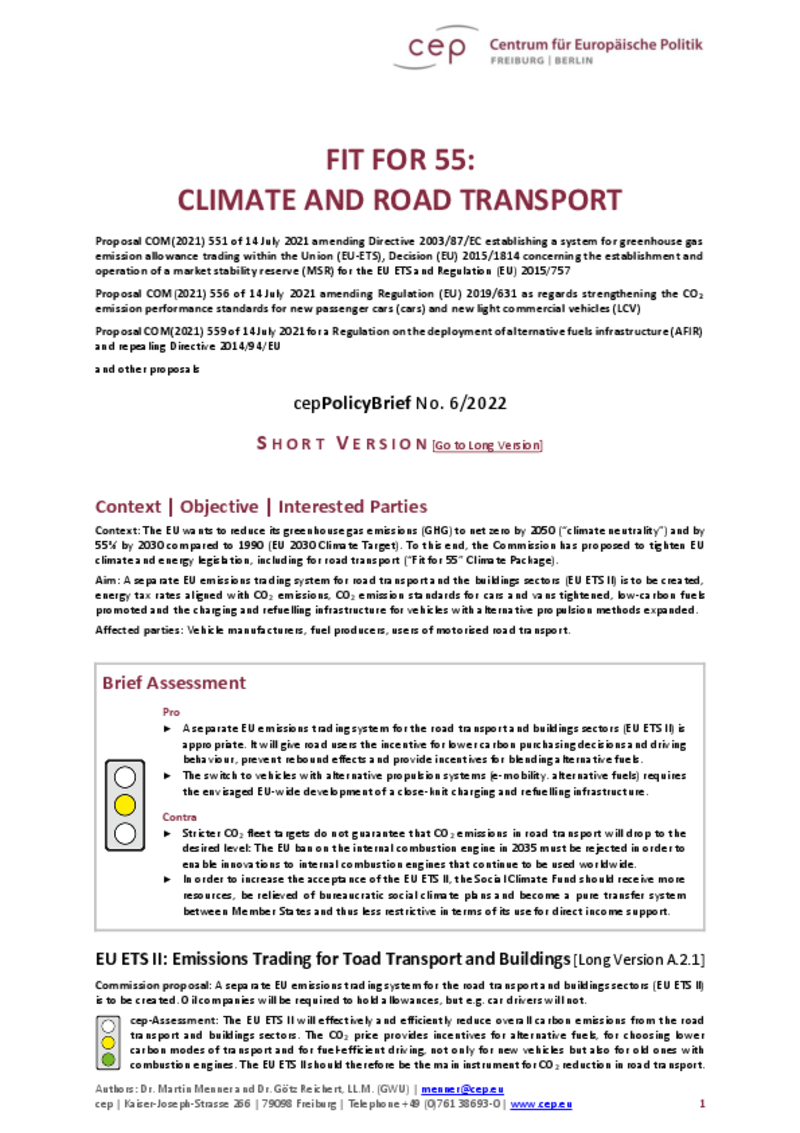
Climate
Fit for 55: Climate and Road Transport (cepPolicyBrief)
cepPolicyBrief
"Emissions trading would effectively reduce the emissions of road transport, as it has already proven to do with energy-intensive industries," emphasises cep-climate expert Götz Reichert, who examined the EU EHS II with cep-economist Martin Menner. "In contrast, stricter CO2 limits for vehicles have not been able to prevent the rise in emissions."
For this reason, both cep-scientists also reject a ban on combustion cars by 2035. In emerging and developing countries, combustion cars would still be in demand long after 2035. There is a risk of production along with research and development being relocated - without any corresponding benefits for climate policy.
"Instead of further tightening CO2 limits and rejecting the effective and cost-efficient EU EHS II for fear of social upheaval, the European Parliament and the EU Member States should now do their homework and cushion exploding energy prices socially," demands Menner. To this end, the auction proceeds should not flow into the EU budget, but should be used by the Member States to finance direct income support. This would be crucial for the acceptance of the EU EHS II in the population. Climate protection measures should be better financed from the national budgets for reasons of social justice. "A failure of EU EHS II would be fatal in terms of climate policy," warns Menner.



